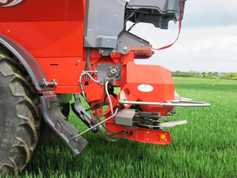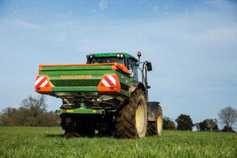Breeding season: The main breeding season for most farmers has started or is about to start. A successful breeding season is characterised by getting a high proportion of cows in-calf in the first six weeks – the target is greater than 75% and to have an overall empty rate of less than 10% after 12 weeks of breeding.
While herd genetics have a big bearing on your ability to achieve these results, so too does management. So what are the farmers of the top-performing herds doing? They are watching cows a minimum of three times a day, at morning and evening milking and again in the evenings before dusk. They always carry a notebook, recording numbers of cows acting suspiciously or hanging around bulling cows. Tail paint is kept topped up twice a week and it is applied correctly – a 9in by 2in strip from the top of the tail head back towards the cow’s head. They spend time training staff on the signs of heat and dedicate time to do heat detection themselves – demonstrating the importance of it.
Anyone doing AI should do an annual refresher course. Incorrect handling of straws reduces the sperm count and the likelihood of conception. Remember to dry the straw after thawing at 37 degrees as water is a spermicide.
Costs: On pages 38 and 39, we go into detail on some of the options available for cutting costs this year. The positives are that scope exists to cut costs – by focusing on a number of small costs a large amount of money can be saved. In our example, €15,000 could be saved on a 100-cow farm, which is substantial. Not all of the costs can be kept down in the long term, but some costs can definitely be postponed until milk prices increase. There are reports of increased numbers of cows being sold in marts and to the factories. Many farmers are taking the view that now is a good time to offload poor-quality cows, or cows with lameness or cell count issues. Cows with chronic SCC or repeat mastitis cows should be offloaded.
Milking technique: I was talking to a young farmer during the week who is beginning to suffer shoulder pain. He works on a farm with over 300 cows and was blaming milking for the pain. When pressed further, it turns out he doesn’t use the correct milking technique as he only uses his right arm for attaching clusters. Proper technique is to switch arms between rows. Failure to do this will result in back and shoulder pain later in life, irrespective of how many cows you milk. When attaching clusters to the row on the left as you face the front of the pit, you should hold the cluster in your right hand and attach between the back legs with your left hand starting with the right front teat and working anticlockwise. When attaching clusters on the right hand side of the pit, hold the clusters with your left hand and attach them with your right hand, starting with the front left and working clockwise.






 This is a subscriber-only article
This is a subscriber-only article










SHARING OPTIONS: